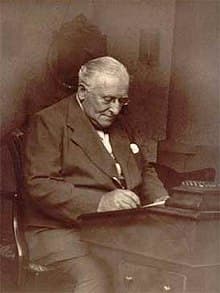
Albert Ketèlbey
He was proclaimed “Britain’s greatest living composer” in the Performing Right Gazette of 1929. That assessment was based on the overall number of performances of his works, and his apparent popularity caused a good deal of professional jealousy.
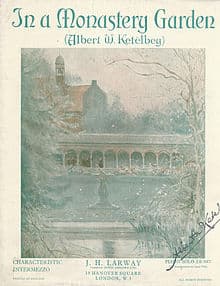
In a Monastery Garden
Today, he is considered the poster child of oriental musical kitsch who wrote pleasant melodies enhances by his undeniable abilities as an orchestrator. You might have guessed already that I am referring to Birmingham-born Albert Ketèlbey (1875-1959). He composed hundreds of pieces for light orchestras and bands, and his series of exotic mood pictures made him Britain’s first millionaire composer. It all kicked off with the orchestral work In a Monastery Garden, which was published as a piano piece and also in full orchestral form. It became known all over the world, and by 1920 over a million copies of the sheet music had been sold.
Albert Ketèlbey: In a Monastery Garden (Slovak Philharmonic Male Chorus; Slovak Radio Symphony Orchestra; Adrian Leaper, cond.)

In a Persian Market
In 1919 Ketèlbey followed up this worldwide success with “In a Persian Market,” which immediately became another hit. Although hugely popular with audiences, critics were quick to point out its musical and aesthetic shortcomings. It was described as “reprehensibly demeaning or delightfully tacky,” and the composer and conductor Nicolas Slonimsky saw it as an “immaculate conception of imperialistic colonial England. The composer’s intention is to convince the listener that all’s well in the colonies where beautiful women and exotic fruits mature together, where beggars and rulers are friends, where there are no imperialists, no restive proletarians.” A critic in The Musical Times called it “naïve and inexpensive pseudo-orientalism,” and when Ketèlbey objected, the critic responded, “In a Persian Market is bad music, without skill or convincing quality of any kind.”
Albert Ketèlbey: In a Persian Market (Royal Philharmonic Chorus; Royal Philharmonic Orchestra; Eric Rogers, cond.)
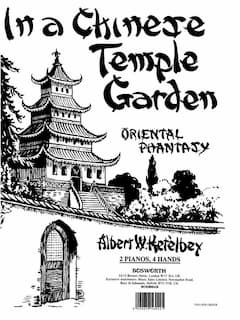
In a Chinese Temple Garden
However, there was no denying that Ketèlbey’s music flew off the shelves, and his 1923 In a Chinese Temple Garden, subtitled “Oriental Phantasy” focused on exotic sound effects including the generous use of the gong and cymbals. The composer himself provided a brief synopsis of his work, writing, “’After a few bars characteristic introduction, – The incantation of the priests in the Temple; the perfume of incense floats on the air; a melody represents two lovers; a Manchu wedding procession passes noisily by, a street disturbance ensues amongst the coolies—founded on an actual Chinese scale—the beating of the gong in the Temple restores quietude, the incantation of the priests is heard again, and the lovers’ song (amongst the singing of birds) with a brief quotation from the Temple and Coolies music brings the piece to it’s conclusion.” Despite the naiveté of the scenario and its subsequent shallow musical portrayal, it is worth remembering that these topographical mood pictures and genre pieces essentially were conceived as accompaniments to silent films.
Albert Ketèlbey: In a Chinese Temple Garden (Palm Court Theatre Orchestra; Anthony Godwin, cond.)
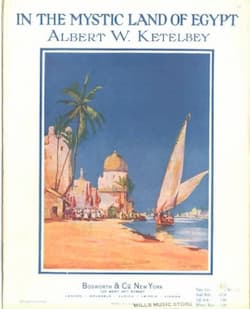
In the Mystic Land of Egypt
Modeled after In a Persian Market and In a Chinese Temple Garden, Ketèlbey composed his In the Mystic Land of Egypt in 1931. Originally scored for orchestra and optional voices, it was published in versions for piano in the same year. Once again, Ketèlbey targeted the amateur pianist market. These pieces of moderate difficulty display simplicity of structure, and he uses attractive harmonies to enhance the overall appeal of his charming melodies. A synopsis provided by the composer reads, “Native soldiers pass through a village, followed by a soft song from a boat on the Nile. An Arab plays on a pipe, then the song is repeated by the orchestra, finally also by the returning soldiers.” If you are looking for any sense of cultural, social and/or musical authenticity, you will be sorely disappointed. It never was, nor ever pretended to be, more than a highly-popular form of light topical entertainment in which “the listener becomes the beneficiary of a riot of imagination.”
Albert Ketèlbey: In the Mystic Land of Egypt (Philharmonia Orchestra; John Lanchbery, cond.)

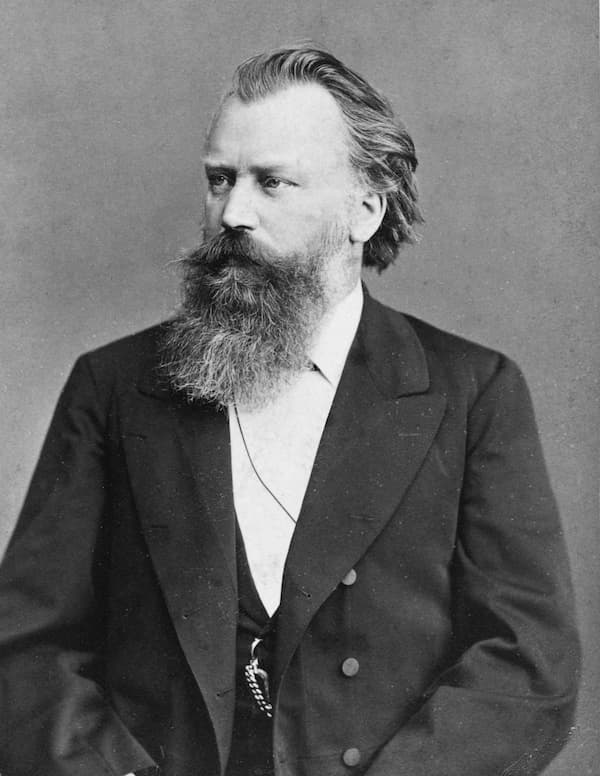
It is tempting for the modern critic, to look at Ketelby’s music through the harsh multicultural lens of leftist “authenticity”, “colonialist” claptrap, and general disdain for the Western World. I vow never to become “politically correct”, nor to judge the words, works, and actions of a century ago in terms of contemporary transitory sensibilities. I admit holding a bias here, in that I am of another age and time; also, that I much prefer early twentith century “light” music, with its simple mid-romantic tonalities, to much of what is celebrated as “serious” music from that same era — which often sounds to me as appealing as fingernails scraping on a slate blackboard. I love “salon” music also. Ketelby’s presentation is nearly uniformly pleasing on the ear, much as that of Eric Coates, Leroy Anderson, and others who gave so much common-man pleasure. I do not analise its cultural “integrity”; for to do so is an arrogant miss of the point. It is English light music, to delight the ear, lighten the heart, and refresh the spirit. Perhaps it is more appealing to Anglophiles and those (such as myself) of British descent. If you seek to understand it, wind-up that 1918 Victrola, get out that acoustic Victor recording (which sold into the millions at the time, no doubt), park your two year-old great-great-granddaughter in front of it, set the needle into the first 78 r.p.m. spinning groove, let the music play, and see her smile. What greater valuable gift could Albert Ketelby have left to us?
I couldn’t agree more. I find much ‘Serious’ classical music most unpleasant to listen to. Some of the piano ‘Improvisations’; very clever as they probably are, sound just like finger exercises to me. Notes running up and down the scale in and out, with no discernable melody whatsoever! They can only be relevant to people learning the piano! The same goes for a scraping violin!
How glibly we refer to “imperialism” when, in fact, performing music for a very exclusive small coterie of people who “understand” is quite elitist and bigoted in itself. Art where the people are…such as a well-designed car or an attractive dinner set…is important to bring the most joy to the most people. Ketelby did that, and it was a crying shame that almost nobody attended his funeral. My taste in the classics tends to be a bit sophisticated, but I recognize snobbery when I see it. Gustav Holst infamously swore never to write another piece of music with appeal to the masses when people flocked to his “Planets”. Is that really the high water mark of western civilization that if too many people enjoy something, it is unworthy?
So sorry Ketelbey had lost his popularity. He should be honored for his work!
I cannot understand why any of Albert Ketelbey’s Music has to my knowledge, NEVER been played on Classic FM! I have many of Ketelbey’s works and I find them really beautiful! I should have thought that English composers like Ketelbey would have been regularly featured on this music station!
I meditate to this music.Most calming and pleasant to the ear.I am glad that a friend turned me onto Ketlebey’s music.